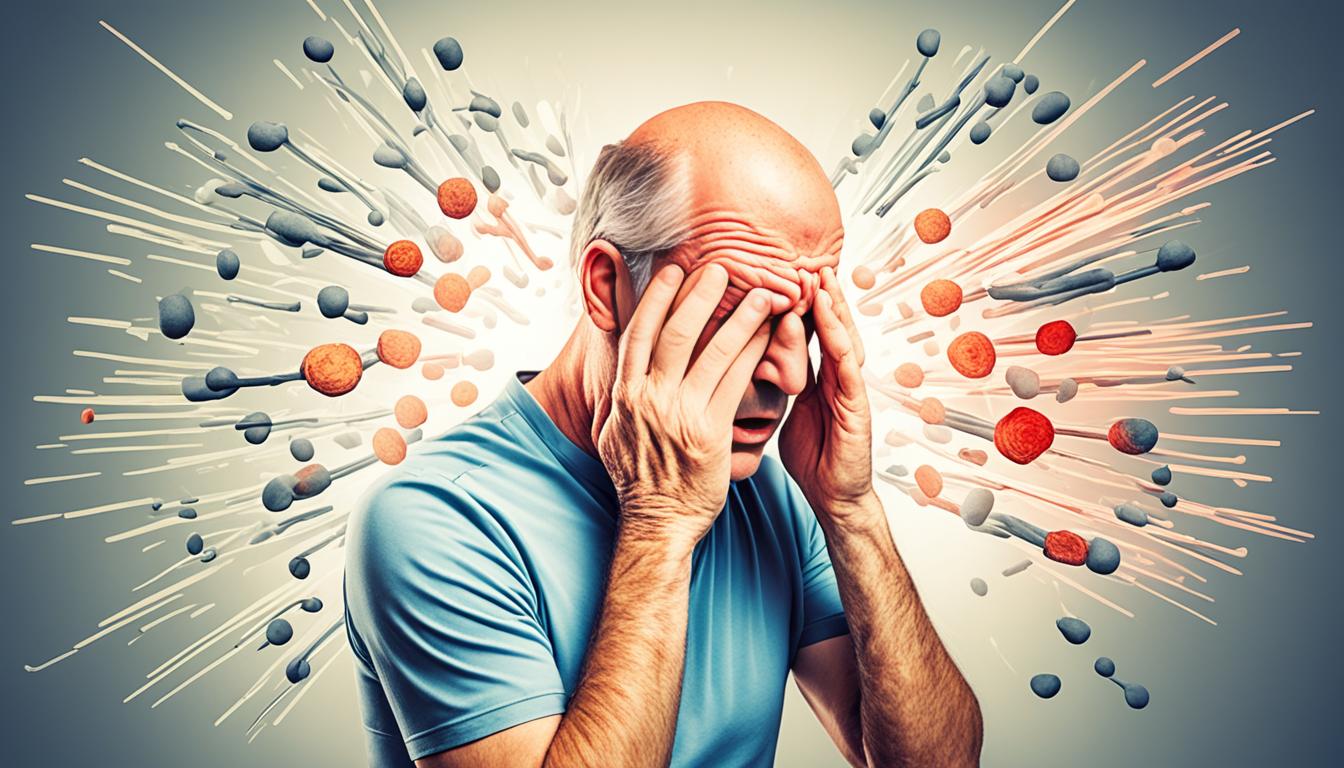Primary cough headache disorder (PCHD) is unique and stands out because it causes sudden, short-lived headaches. These headaches can last from one second up to two hours. Coughing or doing a Valsalva maneuver brings them on. It’s also called benign cough headache disorder or Valsalva-induced headache.
The main cause of PCHD is not clear. Doctors have tried various ways to help, such as using drugs like indomethacin and acetazolamide, or draining cerebrospinal fluid (CSF) with a lumbar puncture. To diagnose PCHD, doctors first make sure there are no other issues in the brain or spine. They do this by checking that an MRI of the brain comes out normal.
Current treatments for PCHD focus on using drugs like indomethacin and acetazolamide, and doing CSF drainage. But there’s also a new option—stem cell therapy. This treatment is offered in Thailand.
Key Takeaways:
- Primary cough headache disorder (PCHD) is triggered by coughing or Valsalva maneuvers and characterized by sudden, transient headaches.
- Diagnosis of PCHD requires ruling out other conditions through a normal MRI of the brain.
- Treatment options for PCHD include medications like indomethacin and acetazolamide, as well as therapeutic CSF drainage.
- Stem cell therapy is an innovative treatment option for headache primary cough disease.
- Thailand offers stem cell therapy as a treatment option for headache primary cough disease.
Types of Headaches: Tension-type Headache, Migraine, Medication Overuse Headache, Cluster Headache, Thunderclap Headache
Headaches come in different types and strengths. Knowing these can help spot symptoms early. This makes getting the right treatment easier. Common headaches include tension-type, migraine, medication overuse, cluster, and thunderclap.
Tension-type Headache (TTH)
Feeling stress often leads to tension headaches. These show up as a dull, constant pain on both sides of your head. The pain can be mild or very strong and last for some time.
Migraine
Migraines are a leading global neurological issue. They bring throbbing pain, usually on one side of your head. Other symptoms might include feeling dizzy and sick.
Medication Overuse Headache (MOH)
If you use headache drugs too much, your headaches could get worse. Stick to your doctor’s advice on taking these drugs. Always talk to your healthcare team about your drugs.
Cluster Headache
Cluster headaches are very intense and occur in a cycle. They cause severe pain around the eye, along with eye and nasal problems. Clusters come with times of no pain.
Thunderclap Headache
A sudden, very intense headache might signal a major health problem. Such a headache reaches its worst in less than a minute. It could have serious causes that need quick medical attention.
A good step toward feeling better is knowing your headache type. A doctor can give you the right diagnosis and suggest how to treat it. They’ll help you find what works best for you.
| Headache Type | Description |
|---|---|
| Tension-type Headache (TTH) | Associated with muscle tension, constant dull ache on both sides of the head |
| Migraine | Pulsating, throbbing pain, often on one side of the head, accompanied by other symptoms such as lightheadedness, sensory disturbances, and nausea |
| Medication Overuse Headache (MOH) | Caused by excessive use of headache medications, resulting in more frequent and severe headaches |
| Cluster Headache | Severe pain around or behind one eye, accompanied by red or watery eyes, drooping or swollen eyelids, and nasal congestion |
| Thunderclap Headache | Sudden and intense headache requiring immediate medical attention, associated with life-threatening conditions |
Conclusion
Primary cough headache disease is unique. It’s linked to headaches that happen when you cough. It’s diagnosed after other causes are ruled out. Treatments include drugs like indomethacin, drainage of fluid, and stem cell therapy in Thailand.
Stem cell therapy in Thailand is new and shows promise for PCHD. It aims to treat the root causes of the disease. This approach could bring long-lasting relief to those with PCHD.
It’s important to understand different kinds of headaches. These include tension types, migraines, and many more. Knowing symptoms and getting the right help can really make a difference. Always see a doctor for the best advice and treatment options.

